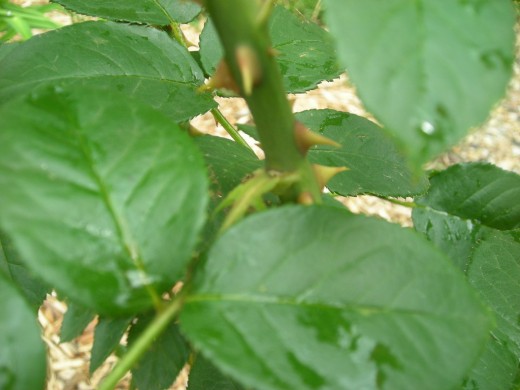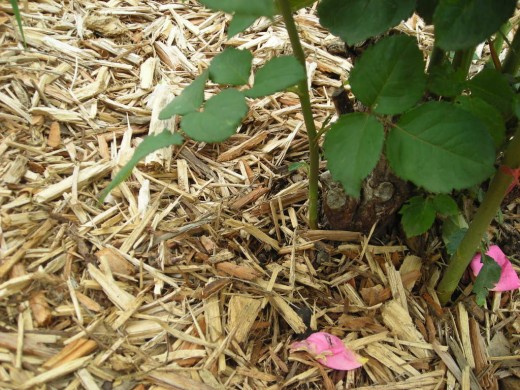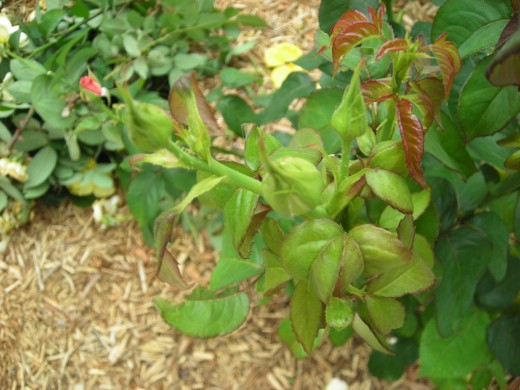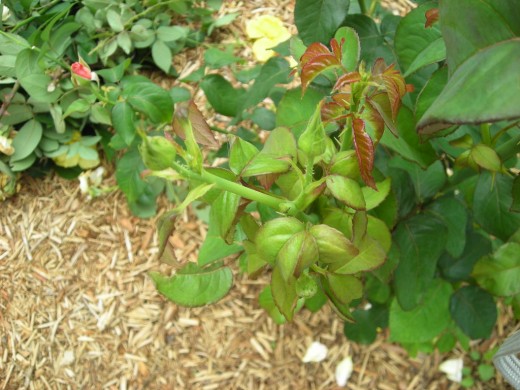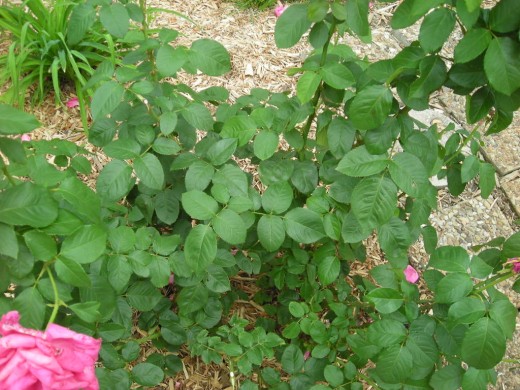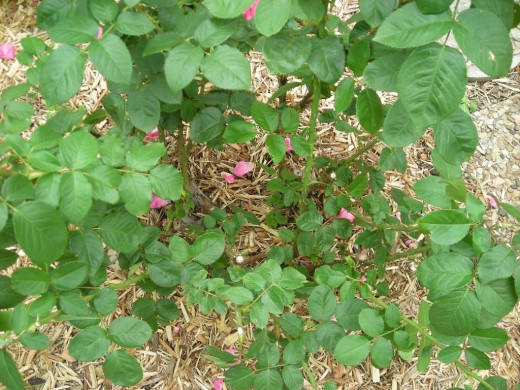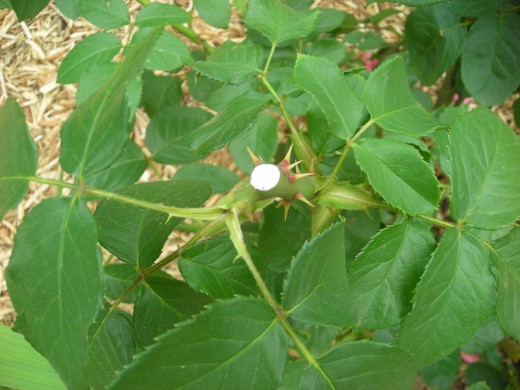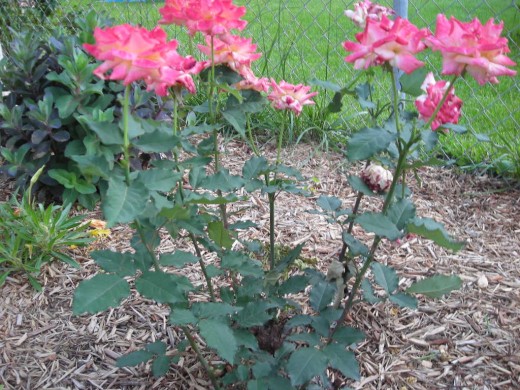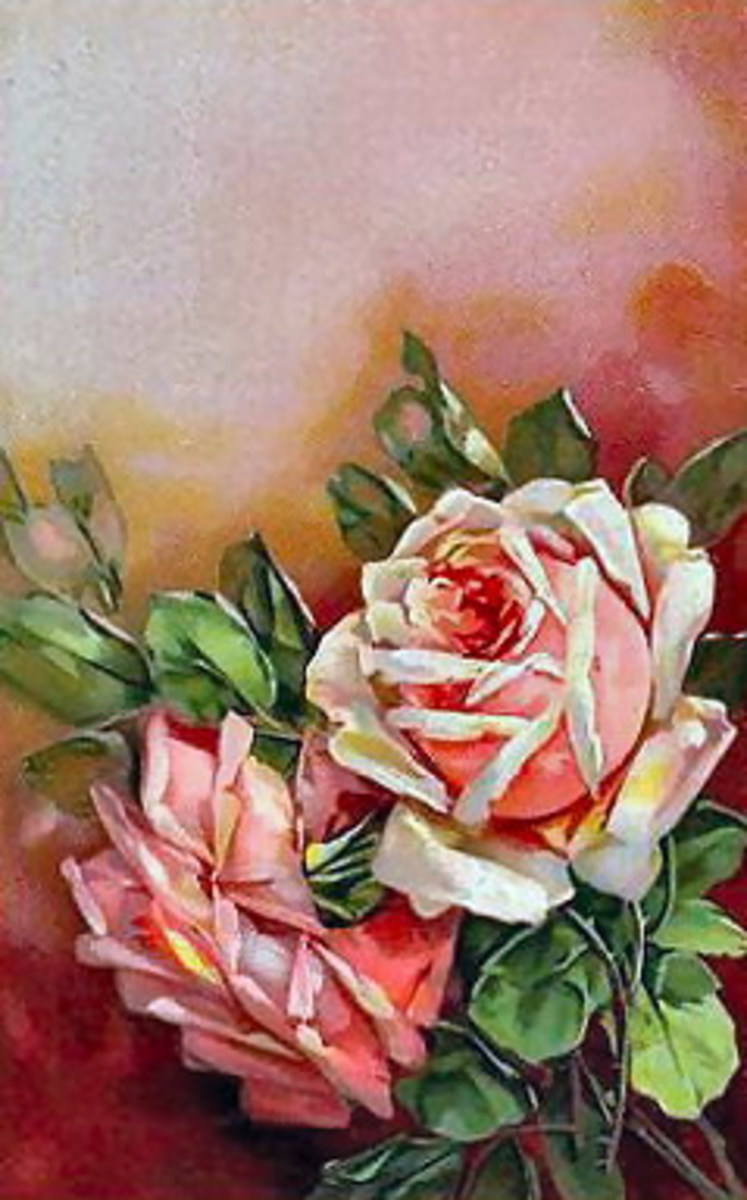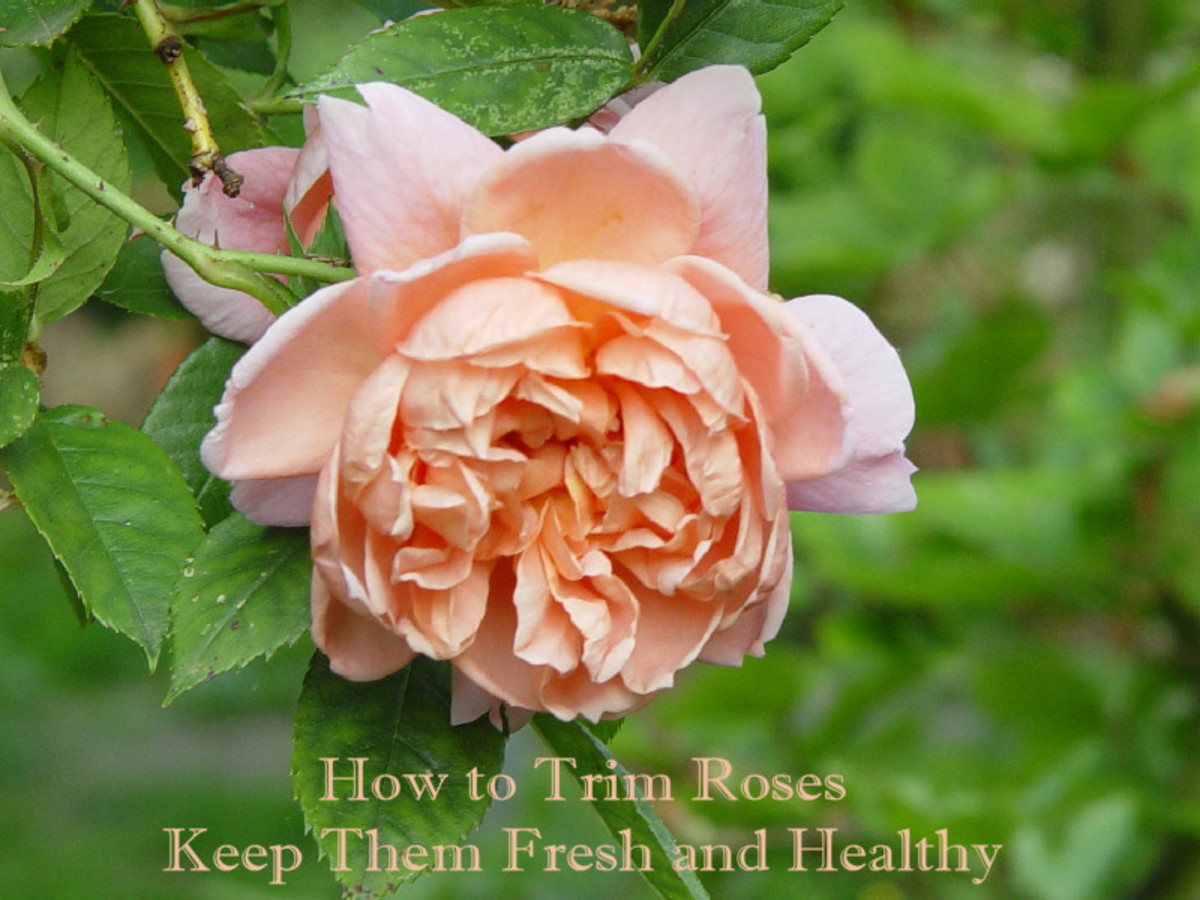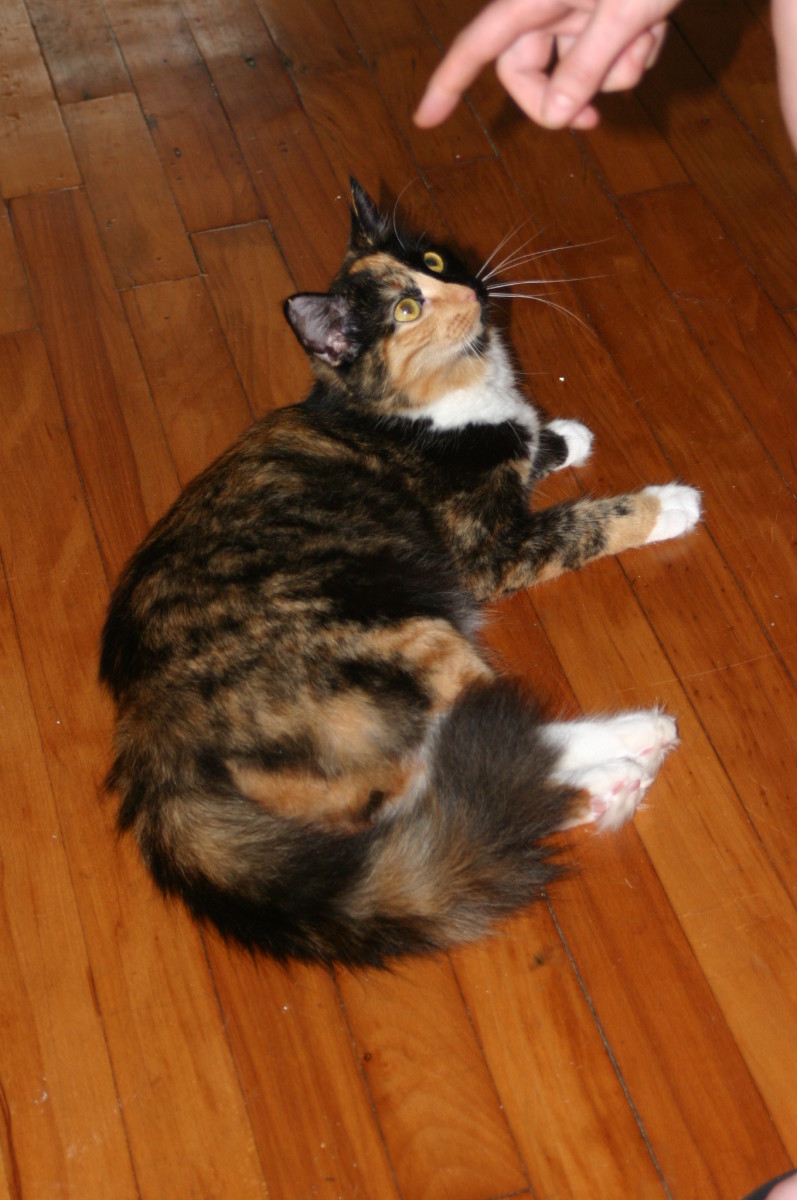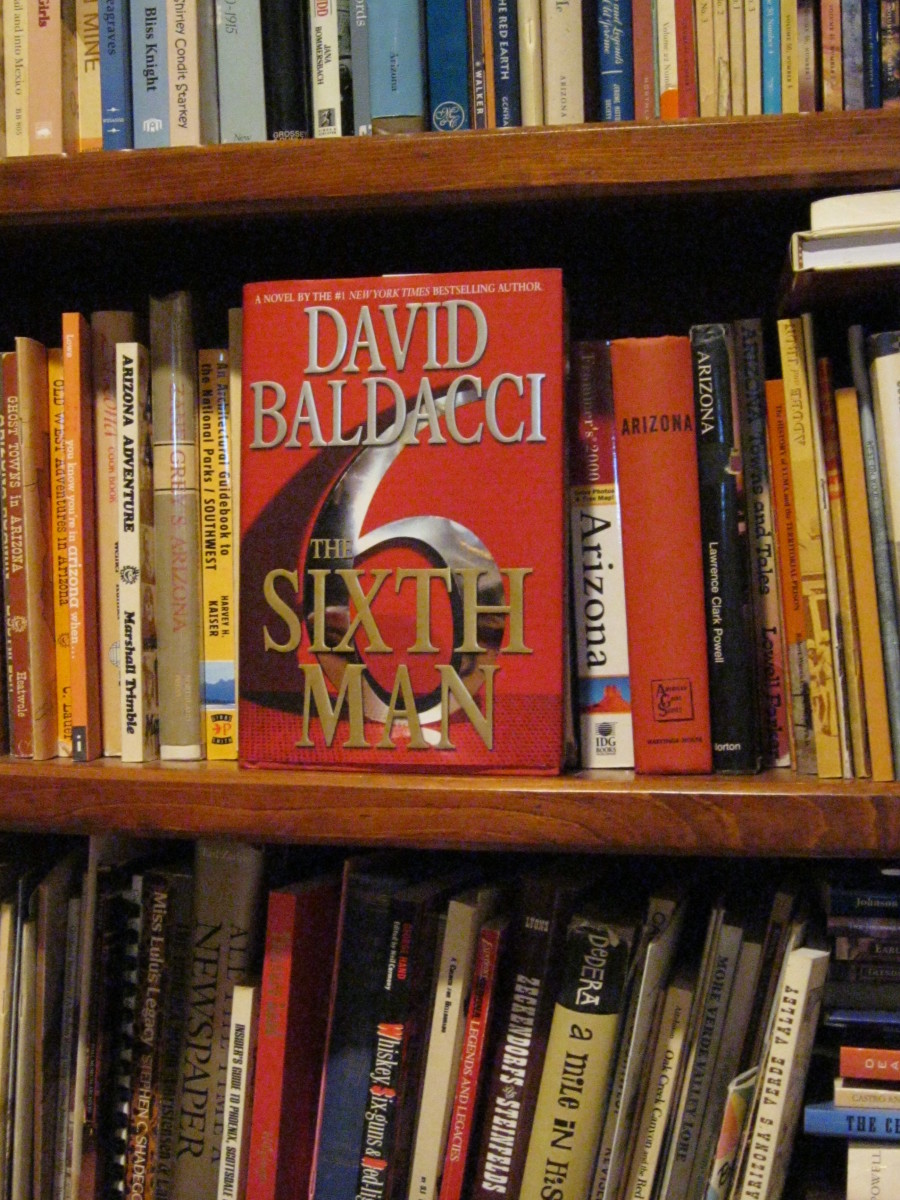Rose Pruning Tips For Hybrid Teas, Floribundas, & Grandiflora Roses
THE BENEFITS OF PRUNING
Pruning rose bushes for some can be a frightening task. But it doesn't have to be. Really! A properly-pruned rose bush is not only healthy, but shapely; which are the primary reasons rose pruning is necessary.
Since the majority of bloom-producing energy is stored up in the larger, woodier canes, pruning the lesser stems encourages new production from the well-established growth.
Just remember. New blooms are ONLY PRODUCED on new growth. That's the rule. It will never waver. So we must prune roses accordingly.
Careful rose pruning also increases needed air circulation in the center of the bush. This decreases the risk for fungal disease and also allows you to shape your roses into spectacular profiles.
At the end of the day, your vigorous and eye-grabbing roses are the result of your own hands (and the shears they wield). By holding fast to the following rose pruning tips, you'll be the envy of your neighbors and the provider of many exquisite blooms all season.
So let's get started! Shall we?
A Small Disclaimer: The following rose pruning tips are primarily for hybrid teas, floribunda, and grandiflora roses. Guidelines for other types of roses (i.e. climbing, shrub, tree, and landscape) are not covered.
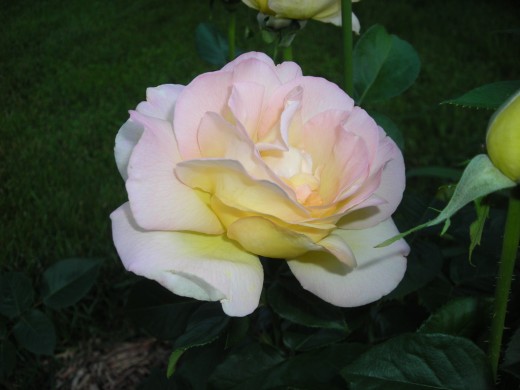
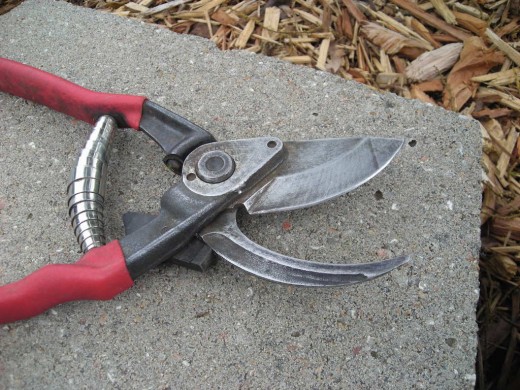
THE TOOLS OF THE TRADE
Every rose pruning job begins with the proper tools. No garden shed should lack a high-quality pair of dual, curved-blade pruning shears and a nice pair of loppers.
Features to look for in pruning shears are simplicity in design, type of material used (tempered steel is best), and the type of cut produced. As mentioned earlier, the dual, curved-blade shears are superior. I've learned through experience never to purchase flat, anvil-type shears (which tend to crush the canes more than cut them), or lesser-quality imported tools. Spend the extra dollars and get something that with care, will last.
The same rules apply to the loppers. Get a good pair and take care of them.
The lopping shears are primarily used during the initial spring pruning. This is where you'll likely remove the heavier, deadwood left over from the previous season. A good rule of thumb is to remove these older, thicker canes as near the original bud union as possible.
You can tell if the wood is dead if there is no sign of green pith as you cut it.
I'd be remiss if I failed to mention the gloves. A nice pair of leather gardening gloves is comfortable to wear and they keep the thorniness at bay.
Tool Maintenance:
Before and after each rose pruning, make sure your tools are sharp and clean. This is important so your cuts will be crisp and the plants will be less susceptible to cane borers and other insect damage.
Dull shears make blunt, ragged cuts which are not healthy for your roses.
A simple way to maintain your tools is to wipe them down with a light rag gently soaked in some type of plant oil. (NEVER use petroleum-based oils on your plants). You can then use another light rag to absorb the residue.
The oil on the rag both cleans the tool and helps prevent rust and corrosion.
WHAT TO PRUNE AND WHERE
Center Growth:
After your roses have been growing for awhile (after all, you have the perfect site, the perfect soil, and each plant has been perfectly planted), there's probably a decent amount of new, but unnecessary growth. And it's time to get rid of it.
Most of this unruly growth is in the center of the plant near the bottom. These small and seemingly innocent-looking stems restrict the proper air circulation needed by the plant. Roses need good air circulation to limit the amount of "trapped" moisture which often leads to many fungal diseases. So let it be gone.
Other growth in need of pruning includes all large, center-crossing canes for the same reason as above.
In short, when pruning your roses, you're actually grooming them to grow in a certain direction and shape. For the roses mentioned here, a vase or urn-like appearance is desirable.
Spent blooms:
Spent blooms are the easiest growth to prune.
This is done by removing the stem with the expired bloom at the first outwardly-facing dormant eye bud. You'll also want to make sure there's at least a five-leaflet grouping above the dormant eye. Typically, the five-leaflet clusters begin about 2-3 clusters down from the spent bloom.
Once you've decided where to cut, do so at a 45° angle as near the dormant eye as possible without damaging it.
This is done so when the freshly-cut cane begins to secrete sap, it will do so away from the new bud. This will also encourage the new bud to grow in an outward direction (which is the way you want your canes to spread).
Other Items to Prune:
Small Canes:
When fertilized regularly, roses will grow every day. The results are stems small in diameter. Even though they appear harmless, what they're really up to is robbing valuable nutrients better suited elsewhere. (As in the larger bloom-producing canes) So be vigilant to remove all these scraggly characters along with their no good antics.
Generally, prune everything less than ¼" in diameter regardless of where it's located on the bush even if it contains a bud bloom. Here's the bottom line: We want the larger bud blooms, not their pint-sized cousins.
Center Buds:
Sometimes found on hybrid teas, but more common in grandifloras and floribundas are bud clusters. These are characterized by groups of 3-5 buds arranged in circular fashion on a single stem. The center bud is prominent and produces the larger bloom.
What I like to do is prune the center bud before it opens in order to allow the surrounding buds to bloom larger than they normally would if the center bud opened and matured.
I know it's hard to cut off a potentially beautiful bloom. But the secondary reward is well worth it.
Dead or Damaged Wood:
Always cut back any dead wood at least ½" below and into the green pith wood and seal the cut with glue to keep borers out. Also remove any wood or canes bearing evidence of insect or fungal damage. Cut back as far as possible and seal the cut.
Suckers:
Suckers are defined as any new growth appearing below the primary bud union. If the stem or cane is not sprouting from an existing cane, it's a sucker. Therefore, remove all suckers as near the main root as possible before they suck any more life from the plant.
Sealing Cuts:
After each pruning cut, it's very important to seal the end of the existing cane to keep hungry cane borers and other insects out. There are various seal pastes you can purchase to achieve this, but you can also use everyday school or carpenter's glue.
Simply put a dab over the fresh cut, (but not over the dormant eye) and allow to dry. Within a few hours, the glue will harden; thus keeping out most of those ravenous rose-wood-eating monsters.
HELPFUL PHOTOS
Click thumbnail to view full-size







IN CONCLUSION
I hope these rose pruning tips will assist you on your way to better rose-pruning. Although you may think it's easy to seriously damage a rose bush with poor pruning, the fact is they'll usually make it back just fine. So take your time and enjoy the roses.


